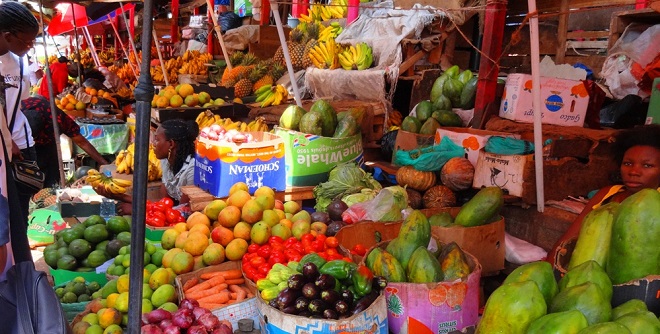
Kampala, Uganda |JULIUS BUSINGE | Uganda’s price of goods and services somewhat reduced to 5.7% in the year ending July 2017 down from 6.4% recorded in the same period in June 2017, according to data from the Uganda Bureau of Statistics (UBOS) released on July 31.
The statistics body said the decline was attributed largely to changes in food crop inflation – that came with a new harvest season.
The statistics body compiles prices in the first 15 days of the reporting month. Any change in price in the remaining days of that month is reflected in the figures of the following month.
According to the data, annual core inflation declined to 4.5% in July compared to 4.9% registered in June 2017.
However, service inflation increased to 4% in the reporting period compared to 3.9% in June. Similarly, annual energy, fuels and utilities inflation increased to 7.8% in July 2017 compared to 5.7% recorded in June 2017. “It is due to high solid fuels,” Ubos said.

At town level, Fortportal (Western Uganda) registered the highest inflation rate of 9.9% followed by Gulu (Northern Uganda) with 9% and then Arua (Northern region) at 7.7%.
This announcement comes at a time the land locked country await to see the impact of an election in the neighboring Kenya that provides a route for most of imported goods.
In 2007, when election results were contested and chaos broke out, Uganda suffered as most traders reported stock shortage. Price of fuel and other essential goods spiked.
However, last week, the Ministry of Energy and Mineral Development said that government has planned to have petroleum reserves of up to 16 days as a buffer in case problems arise in Kenya. Critics however, say this reserve may not be enough due to high consumption levels of this product.
The statistics body will release the next price indices on Thursday – August 31.
 The Independent Uganda: You get the Truth we Pay the Price
The Independent Uganda: You get the Truth we Pay the Price



